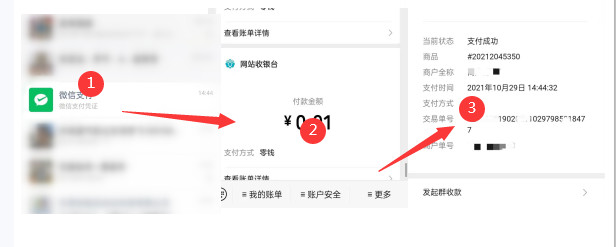为了设计一个患者监护系统,我们首先需要分析需求。根据题目描述,我们需要实现以下功能:
1. 记录患者的基本信息(如姓名、年龄、性别等)。
2. 记录患者的生理指标(如心率、血压、体温等)。
3. 提供查询功能,可以查询患者的基本信息和生理指标。
4. 提供修改功能,可以修改患者的基本信息和生理指标。
5. 提供删除功能,可以删除患者的信息。
接下来,我们可以使用面向对象方法来设计这个系统。首先,我们需要定义几个类来表示患者、生理指标和系统本身。
```python
class Patient:
def __init__(self, name, age, gender):
self.name = name
self.age = age
self.gender = gender
self.vitals = []
def add_vital(self, vital):
self.vitals.append(vital)
def remove_vital(self, vital):
self.vitals.remove(vital)
def get_vitals(self):
return self.vitals
def update_info(self, name=None, age=None, gender=None):
if name is not None:
self.name = name
if age is not None:
self.age = age
if gender is not None:
self.gender = gender
class Vital:
def __init__(self, type, value):
self.type = type
self.value = value
class PatientMonitoringSystem:
def __init__(self):
self.patients = []
def add_patient(self, patient):
self.patients.append(patient)
def remove_patient(self, patient):
self.patients.remove(patient)
def find_patient(self, name):
for patient in self.patients:
if patient.name == name:
return patient
return None
def display_patients(self):
for patient in self.patients:
print("Name: {}, Age: {}, Gender: {}".format(patient.name, patient.age, patient.gender))
for vital in patient.vitals:
print("{}: {}".format(vital.type, vital.value))
```
现在我们已经定义了这几个类,接下来可以实现一些基本的功能,例如添加患者、查询患者信息、修改患者信息和删除患者信息。
```python
# 创建患者监控系统实例
system = PatientMonitoringSystem()
# 创建患者实例并添加到系统中
patient1 = Patient("张三", 30, "男")
system.add_patient(patient1)
# 为患者添加生理指标并保存到系统中
patient1.add_vital(Vital("心率", 75))
patient1.add_vital(Vital("血压", 120))
patient1.add_vital(Vital("体温", 36.5))
# 查询患者信息并显示在屏幕上
system.display_patients()
```
1. 记录患者的基本信息(如姓名、年龄、性别等)。
2. 记录患者的生理指标(如心率、血压、体温等)。
3. 提供查询功能,可以查询患者的基本信息和生理指标。
4. 提供修改功能,可以修改患者的基本信息和生理指标。
5. 提供删除功能,可以删除患者的信息。
接下来,我们可以使用面向对象方法来设计这个系统。首先,我们需要定义几个类来表示患者、生理指标和系统本身。
```python
class Patient:
def __init__(self, name, age, gender):
self.name = name
self.age = age
self.gender = gender
self.vitals = []
def add_vital(self, vital):
self.vitals.append(vital)
def remove_vital(self, vital):
self.vitals.remove(vital)
def get_vitals(self):
return self.vitals
def update_info(self, name=None, age=None, gender=None):
if name is not None:
self.name = name
if age is not None:
self.age = age
if gender is not None:
self.gender = gender
class Vital:
def __init__(self, type, value):
self.type = type
self.value = value
class PatientMonitoringSystem:
def __init__(self):
self.patients = []
def add_patient(self, patient):
self.patients.append(patient)
def remove_patient(self, patient):
self.patients.remove(patient)
def find_patient(self, name):
for patient in self.patients:
if patient.name == name:
return patient
return None
def display_patients(self):
for patient in self.patients:
print("Name: {}, Age: {}, Gender: {}".format(patient.name, patient.age, patient.gender))
for vital in patient.vitals:
print("{}: {}".format(vital.type, vital.value))
```
现在我们已经定义了这几个类,接下来可以实现一些基本的功能,例如添加患者、查询患者信息、修改患者信息和删除患者信息。
```python
# 创建患者监控系统实例
system = PatientMonitoringSystem()
# 创建患者实例并添加到系统中
patient1 = Patient("张三", 30, "男")
system.add_patient(patient1)
# 为患者添加生理指标并保存到系统中
patient1.add_vital(Vital("心率", 75))
patient1.add_vital(Vital("血压", 120))
patient1.add_vital(Vital("体温", 36.5))
# 查询患者信息并显示在屏幕上
system.display_patients()
```
试用面向对象方法方法,设计本书习题2第4题中描述的患者监护系统
为了设计一个患者监护系统,我们首先需要分析需求。根据题目描述,我们需要实现以下功能:1. 记录患者的基本信息(如姓名、年龄、性别等)。2. 记录患者的生理指标(如心率、血压、。下面小编给大家分享试用面向对象方法方法,设计本书习题2第4题中描述的患者监护系统,希望能帮助到大家。 试用面向对象方法方法,设计本书习题2第4题中描述的患者监护系统文档下载网址链接:
推荐度:



点击下载完整版文档为doc格式










 扫一扫支付
扫一扫支付


